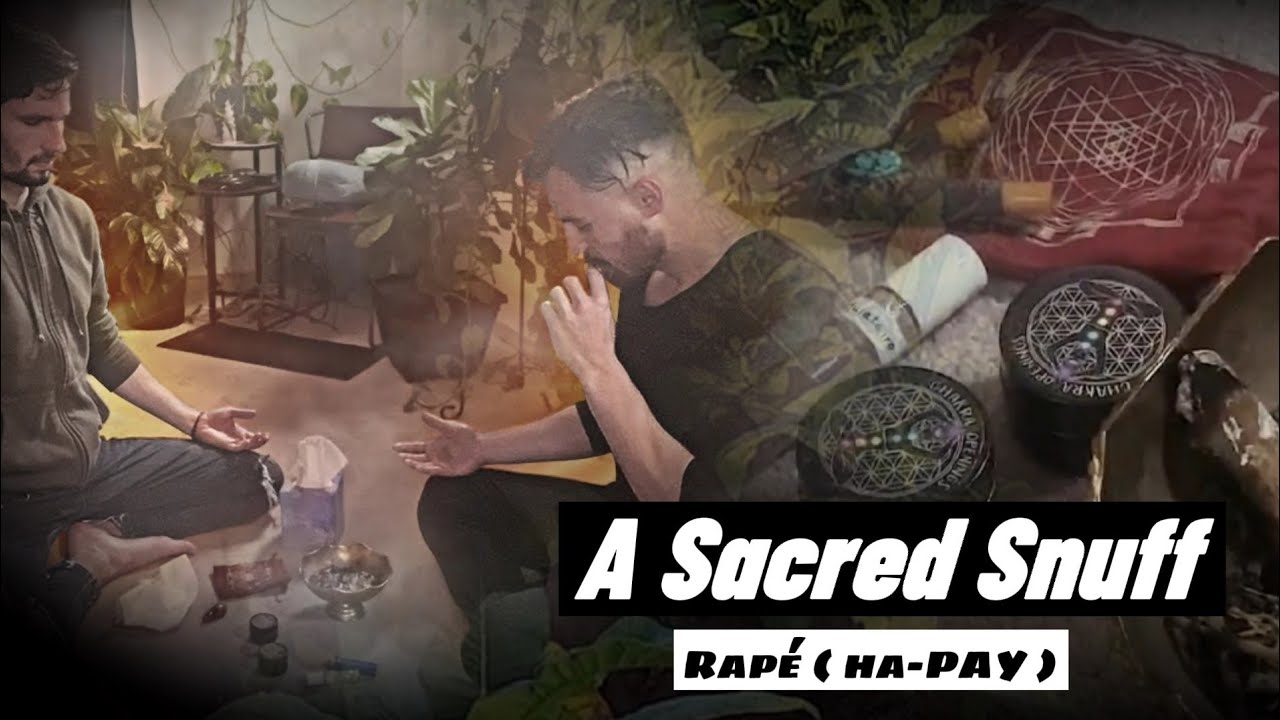Experience the transformative power of the ancient Hapé ceremony and embark on a profound journey of self-discovery and healing. This sacred ritual, practiced by indigenous tribes of the Amazon rainforest for centuries, offers a unique opportunity to connect with your inner self and the natural world around you. Through the skilled guidance of experienced shamans, you will be introduced to the sacred Hapé blend, a powerful mixture of medicinal plants and herbs, carefully prepared to cleanse and purify your mind, body, and spirit. As you partake in the Hapé ceremony, you will be enveloped in a deeply sacred atmosphere, surrounded by the soothing sounds of traditional chants and the aromatic scents of burning herbs. The gentle application of Hapé to your nasal passages will induce a profound sense of clarity, grounding, and heightened awareness. This ancient practice is known to facilitate emotional release, spiritual connection, and a profound sense of well-being. Let the wisdom of the Hapé ceremony guide you on a transformative journey of self-exploration, as you immerse yourself in the rich traditions of indigenous cultures and tap into the healing powers of nature. Step into a world of ancient wisdom and experience the profound effects of the Hapé ceremony on your mind, body, and soul.

Hapé Ceremony
| Aspect | Description |
|---|---|
| Origin | The Hapé Ceremony is an ancient ritual originating from the indigenous tribes of the Amazon rainforest, particularly the Yawanawá, Katukina, and Nukini tribes. |
| Purpose | The ceremony is conducted to cleanse the mind, body, and spirit, as well as to establish a deeper connection with the spiritual realm and the natural world. |
| Preparation | Before the ceremony, participants are required to follow a strict diet and abstain from certain substances, such as alcohol and spicy foods. This purifies the body and enhances the effects of the hapé. |
| Hapé Medicine | Hapé, also known as rapé, is a sacred medicine used during the ceremony. It is a powdered mixture made from various plants, including tobacco leaves, tree barks, and ashes. The medicine is blown into the nostrils using a special pipe called a “kuripe” or administered by a shaman. |
| Effects | Upon inhalation, hapé induces a powerful cleansing experience, often accompanied by intense physical and emotional sensations. It is believed to clear negative energies, promote mental clarity, and facilitate healing on different levels. |
| Shamanic Guidance | The ceremony is led by a shaman, who acts as a spiritual guide and facilitator. The shaman’s expertise is fundamental in creating a safe and sacred space for participants to explore their consciousness and receive the healing benefits of hapé. |
| Cultural Significance | The Hapé Ceremony is deeply rooted in indigenous culture and holds profound spiritual significance. It is considered a way to honor ancestral traditions, connect with the wisdom of the forest, and maintain harmony with nature. |
“Essential Insights for a Transformative Rapé Experience”
Understanding the Hapé Ceremony: A Journey to Spiritual Awakening
Hapé ceremony, also known as rapé ceremony, is a traditional shamanic ritual that has been practiced for centuries by indigenous tribes in the Amazon rainforest. This sacred ceremony involves the use of a medicinal snuff made from powdered tobacco and various other plants, which is blown into the nostrils of participants using a blowpipe or a small bone tube. The purpose of the hapé ceremony is to connect with the spirit world, cleanse the mind and body, and gain spiritual insights.
The Origins of Hapé Ceremony
The origins of the hapé ceremony can be traced back to the indigenous tribes of Brazil, Colombia, Peru, and other South American countries. These tribes believe that hapé, also known as snuff, is a powerful medicine that has the ability to purify the mind, balance energy, and promote healing on a spiritual and physical level. The knowledge and practice of the hapé ceremony have been passed down through generations, preserving the ancient wisdom and cultural traditions.
The Preparation and Ritual
Before the hapé ceremony, the shaman or the ritual leader prepares the sacred snuff by grinding tobacco leaves and mixing them with various medicinal plants, such as tree barks, seeds, and ashes. The specific ingredients used may vary depending on the tribe and the intention of the ceremony. The preparation process is considered sacred and is often accompanied by prayers and chants to invoke the spirits and bless the snuff.
During the ceremony, participants gather in a sacred space, often in nature or a specially designated ceremonial space. The shaman leads the ceremony, guiding participants through rituals, prayers, and chants. Each participant takes turns receiving the hapé snuff through the nostrils, either self-administered or blown by the shaman. The participants then sit in silence, allowing the medicine to take effect and the spirit world to communicate with them.
The Benefits of Hapé Ceremony
The hapé ceremony offers numerous benefits for those who participate in it:
1. Spiritual Connection: The ceremony helps individuals deepen their spiritual connection and enhance their intuition. It allows participants to tap into their higher consciousness, access spiritual guidance, and gain insights into their life’s purpose.
2. Mental Clarity: Hapé is believed to clear the mind, remove mental and emotional blockages, and promote mental clarity. It can help individuals release negative thought patterns, fears, and limiting beliefs, allowing for greater mental focus and emotional well-being.
3. Physical Healing: The medicinal properties of the hapé snuff are believed to have therapeutic effects on the physical body. It is thought to cleanse the respiratory system, boost the immune system, and promote overall well-being. Some tribes also use hapé for its analgesic properties, using it to alleviate physical pain and discomfort.
4. Energetic Cleansing: Hapé is considered a powerful tool for energetic cleansing. It is believed to remove stagnant energy, negative vibrations, and spiritual blockages from the energy body, restoring balance and harmony. Participants often report feeling lighter, more energized, and more aligned with their true essence after the ceremony.
5. Emotional Release: The hapé ceremony can facilitate emotional release and healing. It can help individuals process and release suppressed emotions, trauma, and past experiences that may be holding them back. This emotional catharsis can lead to greater emotional resilience, self-awareness, and personal growth.
Respecting and Honoring the Tradition
Participating in a hapé ceremony is a sacred and deeply personal experience. It is important to approach the ceremony with respect, humility, and an open mind. It is crucial to seek out experienced shamans or ritual leaders who have a deep understanding of the tradition and can guide the ceremony in a safe and supportive manner.
It is also essential to honor the indigenous cultures and the sacredness of the plants used in the hapé ceremony. The sustainable sourcing of plants and fair trade practices should be encouraged to support the preservation of traditional wisdom and the well-being of indigenous communities.
In conclusion, the hapé ceremony is a profound spiritual practice that offers a transformative journey for those who seek it. With its rich history, deep-rooted traditions, and powerful healing properties, the hapé ceremony provides an opportunity to connect with the divine, purify the mind and body, and embark on a path of self-discovery and spiritual awakening.

